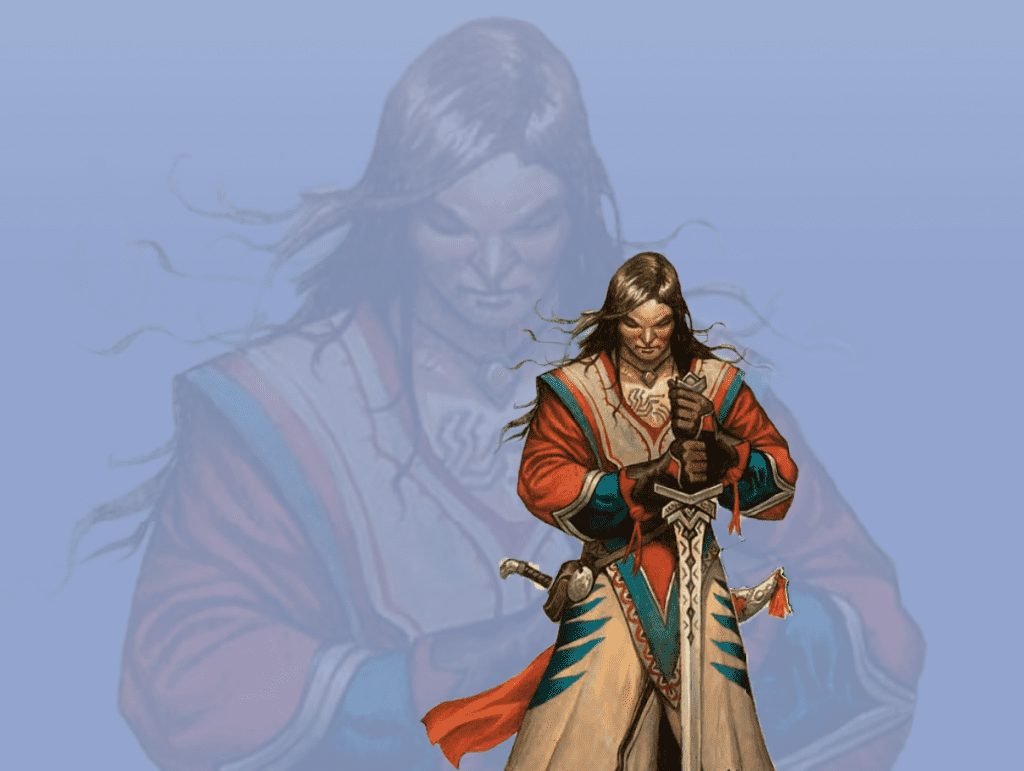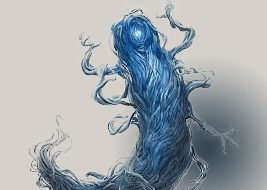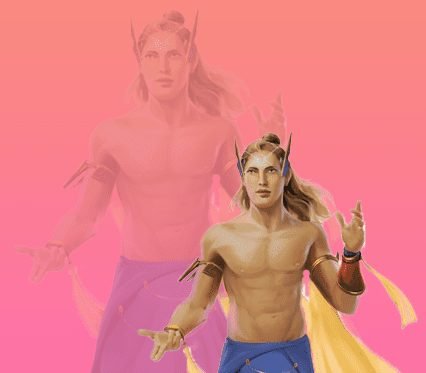Last Updated on December 14, 2022 by admin
Table of Contents
What is “kalashtar”?
It is an action role playing game. Kalashtar is the human who sheltered the benevolent Quori who escaped the Dreaming Dark. Over time, this connection became inextricable. In part due to the number of kalashtar, which is far greater than the number of good-aligned Quori, the spiritual essence of every Quori is distributed among many Kalashtar, known collectively as a lineage.
The Quori is a renegade race resulting from the marriage of a human race with a spirit from the plane of dreams, called the Kalashtar. Many Kalashtar are compassionate, wise people who care deeply about others. The kalashtar are haunted by the conflict of their otherworldly spirits, and it is clear that they belong to another universe.
How are Kalashtar born?
All kalashtars bond to one of the 67 rebel quoris who escaped Dal Quor during the exodus. Kalashtars give their names a continuation of their ancestor’s name: Lanharath, whose ancestor is Harath. The Quori have gendered spirits inherited by their kalashtar babies, for they give birth to a spirit of the same gender as their parent. The Kalashtars are capable of interbreeding with humans and half-elves; if the gender of the Kalashtar parents matches the child’s, the child inherits the bond and is born a Kalashtar.In other cases, it fits the parent’s race. They possess distinct racial characteristics, including their distinctive appearance, which stem from how the quori touched their bodies and souls. No such thing exists as a “half-Kalashtar.”
Where do the Kalashtar live?
Sarlona is home to the Kalashtars, who live in Adar, a forbidding, mountainous region on the southern portion of the continent. Kalashtar exists in Adar; however small their numbers are, and kalashtar’s those found in Khorvaire are even smaller.
Many Kalashtar prefer to be reclusive and stay in the temple-keeps of Adar; however, a few ventured into Eberron because they felt led to do so. Some Kalashtar leave to escape the Dreaming Dark, and others wish to end the siege on Adar by the Riedrans.
Playing techniques
If a Kalashtar were to travel to Khorvaire, they likely would not be traveling unless they had some excellent reason to do so.It is conceivable that a kalashtar might be driven to break the siege of Adar by Riedran forces, or it could be fleeing the Dreaming Dark. Kalashtars usually live secluded and contemplative lives. Although they are friendly and compassionate in a cerebral way, they take a critical approach. Kalashtar keeps strong control over their emotions because of the turmoil in their conjoined souls. Kalashtar demonstrates camaraderie by a wry grin and a remark rather than backslapping a colleague or making an insensitive joke.
The kalashtar fragment from Dal Quor recalls the fleeing from that place. They are still polite and kind and try to remain wary while running from the Dreaming Dark. The Kalashtar struggle with the strange, intangible memories of their quori souls with the thoughts and sensibilities of their human halves. Kalashtars sometimes reveal their calm countenance by acting in unpredictable, dangerous, and even outright dangerous ways.
Read More: Is Human Hair Wigs Right For You? Pros And Cons
Alternative Names.
In Kalashtar, names are 3 to 5 syllables long, and hissing and hard consonants occur frequently. A few different suffixes can be found for male names; these include harath, -khad, -melk, or -tash. Traditionally, female names had feminine suffixes like -kashtai, -Tari, -vakri, or -Shana.
- List of names used to identify the males: Havrakhad, Kanatash, Lanharath, Lanamelk, Minharath, Malharath, Nevitash, Parmelk, Thakakhad, and Thinharath.
- List of names to identify the females: Ganitari, Khashana, Lakashtari, Novakri, Panitari, Mevakri, Sorashana, Thatari, and Thakashtai.
- Names of Kalashtar: Koratesh, Torasha, Delista, Mi’resh, Tel’verrin, Rezjemni, Kalvakri.
Kalashtar in Eberron
There are many kalashtar living inside the temple-keeps of Adar, although some kalashtar out into Eberron’s remaining parts, as long as they have a strong enough reason to do so. Kalashtar, who follows the Path of Light, tends to resist any form of evil. The kalashtar will generally choose to fight the Inspired, but others will show a tremendous amount of empathy and endure evil. While the Kalashtar gets along well with every race, they are perceived as weird by other races because of their psionic powers because they come from a higher realm.
Official Kalashtar Features
The following racial bonuses and features belong to a kalashtar character:
- The ability score increases as follows: Your Charisma score rises by 1, and your Wisdom score rises by 2.
- Age: In Kalashtar, age and maturity following the same pattern as humans.
- In Alignment: To maintain a noble spirit, the Kalashtar should stick to lawful and suitable forms of conduct.A kalashtar’s spirit is powerful, and they combine self-discipline with compassion for all living beings; however, some kalashtar have a hard time resisting the virtuous influences of their spirit.
- Size: Medium is your size.
- Speed: The base walking speed for you is 30 feet.
- Dual Mind: Whenever you use Wisdom, you gain an advantage on all saving throws.
- Mental Discipline: The psychic warrior has enhanced mental fortitude, which allows him to be resistant to psychic damage.
- Mind Link: When your level of another creature is within ten times, you may speak telepathically with that creature. A creature must comprehend at least one language, even if you don’t share a language with it if you wish to communicate using telepathic means.
When using this trait during an action, if you use telepathy to communicate with a creature, that creature can share it with you for an hour while using the trait. The creature must have the ability to see you and be within this trait’s range to use this trait. This ability can only be given to one creature at a time; if you give this to another creature, take it away from them.
- In Severed from Dreams: Kalashtar is capable of sleeping, but they refuse to link their dreams to the world of the living. For this reason, spells and other magical effects are supposed to make people goals, unlike fiction, but that makes you sleepy like sleep and cannot affect you.
- Languages: You can speak three languages; Common, Quori, and one other language of your choice.
Society and Culture
Quor Tarai: The Dream of the Age
Kalashtar believes that at the heart of Dal Quor, there lies the Quor Tarai, the ever-present image of an unlimited and irresistible dreamer who can see all things and inhabit them. Some Quori who differ from the Quori Tarai and the Quori Tarai themselves tend to change, as does the Quori Tarai. According to the Kalashtar, they believe that they lived in the third generation of the Quor Tarai era when the ages of light and shadow are blurred together.
The Path of Light
They reflect every aspect of their lives in il-Yannah, which is the most profound source of Kalashtar faith. To contribute actively to the progress of humanity, Quor Tarai believes that it will usher in a new era of Light and Joy by moving the cycle of Quor Tarai towards its conclusion.
The Path of Shadows
Martial art forms such as the Path of Shadows or Sheshan Talarash Dasyannah are a direct continuation of martial arts in their original sense. Path of Shadow is a fine art that blends exercise, meditation, combat training, and artistic expression into a graceful, powerful, flexible, and hypnotic form of body movement and sweeping motions. It is said that a Kalashtar that focuses purely on the movement stays in the light while the one who uses it for battle training is in the shadows.
What happens when a Kalashtar dies?

As a mortal, the soul of a creature finds itself wandering through the underworld while its memories (and with them, their “self” or identity) fade into obscurity. However, kalashtar has the immortal quori integrated into them, so they cannot be regarded as mortals in the same sense. When the kalashtar dies, the dual soul separates into two parts, the human part, and the quori part. By redistributing quori among living members of a lineage, the bonds to that lineage grow stronger.
Consequently, the fewer members of a lineage, the more powerful they become (except for the first-generation kalashtar who were still fully human with the quori within them, so their bodies and souls were not accustomed to the immense psionic abilities of the quori).
What is Quori?

The plane of Dal Quor is home to a host of creatures called the quori – living embodiments of dream and nightmare. Quori are the power behind the Dreaming Dark and survive in the mortal world by inhabiting the bodies of physical creatures with the ability to dream humanoids preferably. Over centuries they have meticulously managed to breed forth a bloodline of specially prepared human vessels, called the Inspired, which serve as the optimal host bodies.
Among all Quori, Dal Quor, the region of dreams, is at the center. In the farthest corners of the cosmos, their spired cities rise from the dream-stuff just beyond the realm where mortal spirits roam.
Few characteristics identify Quori. Several of them are insectile, others are the dense cloud of eyes and shadows, and others are composed of hundreds of tendrils. It has been observed that most quoris are cruel but sophisticated, preferring psychological conflict over physical conflict. They are endlessly patient, prepared to wait decades to take their revenge or bring a plan to fruition in the long run. The Quori are a species entirely alien to Eberron and material reality. D&D fans will surely love this as they love mastermind rogue 5e.
Read more: How to Become an SEO Strategist 2021
Conclusion
It is concluded that a separate species is formed in kalashtar, a compound race formed by merging Dal Quor Quori and human bodies and spirits. Almost all Kashtars live in Adar temples. There is only one fundamental difference between kalashtars and other monks: their behavior as monks.



























